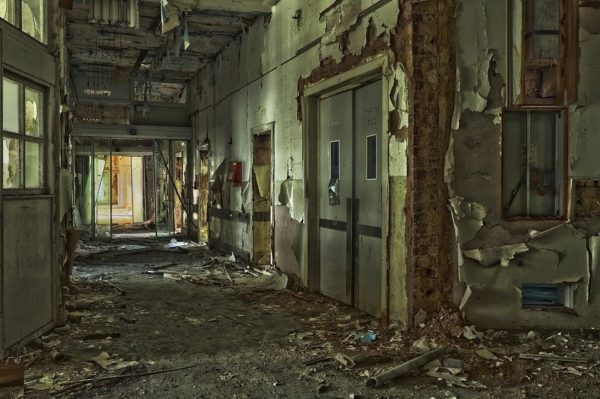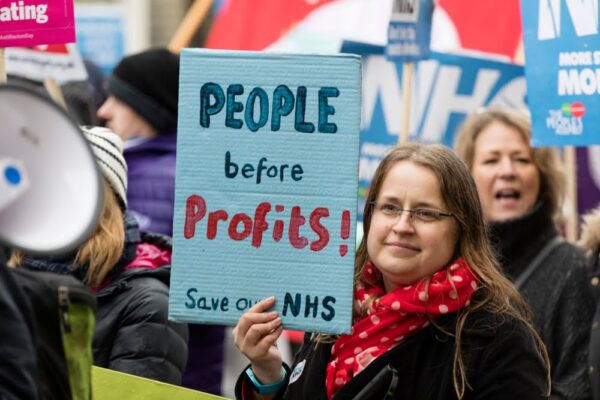
The NHS was a top issue in how people decided to vote in the election. Recent research by The Health Foundation shows that although public satisfaction with the NHS is at a 41-year low, the public continue to strongly support the NHS.
The new Labour government will need to make major decisions on how the current situation in the NHS, in particular record waiting lists, is going to be tackled. Pre-election Labour was reported to be keen to increase the use of the private sector.
The Labour party has pledged that the backlog of about 3.2 million people in England waiting more than 18 weeks for treatment will be cleared in five years, and increased use of the private sector is key.
The issue is that although the government may wish to use the capacity present in the private sector for the NHS, just how much ‘spare’ capacity is there in the private sector and does the sector want to use it for NHS patients?
How much work does the private sector carry out for the NHS?
Government encouragement of the use of the private sector by the NHS has been ongoing for well over two decades.
Since 2010, Nuffield Trust figures show that spending on non-NHS providers has hovered at just over 20% since 2009/10, although the share taken by different areas has shifted within this proportion. For example, spending on dentistry has fallen, whereas spending on elective care has risen.
According to the Nuffield Trust the overall amount of NHS England budget spent on non-NHS owned care provision was 20.8% for 2022/23.
The most detailed data on spending on non-NHS provision available is for elective work carried out in hospitals and clinics, which includes diagnostics and elective surgery. This funding is generally separated from funding for GPs, pharmacists, opticians, and dentistry. Data is not readily available for community work carried out by private and not-for-profit companies.
The Independent Healthcare Providers Network (IHPN) analyses the figures for spend on non-NHS providers on elective work as they are released by NHS England, with figures available up to April 2024.
In recent years, the share of activity carried out by the non-NHS sector has risen. In 2023, in terms of activity share, the independent sector delivered 9.63% of all NHS-funded elective care, up from 7.81% in 2019.
Recently, NHS commissioners have been given targets specified by the Elective Recovery Fund to increase the amount of treatment delivered, and guidance instructed more inclusion of private providers in local plans.
The trend has been upwards over the past six months, with the share at over 10% for five of the past six months, with 10.6% of all NHS elective care delivered by independent sector providers in February 2024. This proportion is higher still in the case of admitted elective activity, with the private sector treating 18% of admitted elective patients overall in February 2024.
The IHPN says that there has been “an increase of, on average, more than 30,000 patients per week since the dataset began publication in 2021”.
Can the upward trend to private sector use continue?
There is no doubt that the private hospital sector in England has done very well out of the NHS. Over the years, companies, such as Spire and Circle, have relied heavily on carrying out work for the NHS to weather financial difficulties. Including during the Covid-19 pandemic when their hospitals closed to private work, and they were given millions to carry out NHS work.
Now however the eagerness of some of the leading private companies to carry out more and more NHS work may be coming to an end and this could be a major problem for political parties that have made promises to reduce waiting lists that involve relying on the private sector.
The issue is money, as it often is for private companies with profits to boost and dividends to pay. The private sector and the NHS get paid the same tariff for a straightforward hip operation, about £7,000, but the private sector charges private patients £12,000 to £15,000. Why then would the companies fill their private hospitals with NHS patients, when there is far more profit to be made with private insured or self-paying patients.
As the waiting list increases more people are likely to seek help as self-pay patients in the private sector, thus reducing the capacity private hospitals have to take NHS patients. Recently Aviva has reported a 41% year-on-year rise in demand for insurance in 2023. It’s not just more individuals, but more businesses that are choosing to offer cover to employees.
In a recent interview with The Sunday Times, Justin Ash, CEO of Spire Health, the UK’s largest chain of private hospitals, said that private hospitals are already full enough and there is very little capacity to take more NHS patients.
“Nine of our hospitals are more than 80 per cent full. A lot of them are very busy.”
He didn’t say that Spire wouldn’t help the NHS, but that the company’s business was focused on providing care for private patients and “not relying on short-term NHS work.”
It is not just the physical capacity that is not available in the private sector for the NHS to use. There is the added issue of staff. The private sector shares consultants and doctors with the NHS. It does not train its own medical staff, although some have begun to train nurses via the apprenticeship route. Staff shortages affect private companies as well as the NHS.
Ash said he was not lobbying for more NHS work “because we’re very busy”, and whichever party won the election a long-term plan would be needed. “You can’t suddenly gear up overnight.”
It is not feasible for the private sector to create more capacity, just because the party in power wants them too.
Private hospital companies, such as Spire, Nuffield and Circle, have expanded their businesses over the years via mergers and acquisitions, as well as by building and opening more hospitals and clinics. However, such decisions are not taken based on helping out the NHS in the short-term, but on expanding their private business for the long-term.
The large hospital chains may be full and unwilling to expand for the NHS, but there is one sector that has rapidly expanded driven by NHS contracts - ophthalmology. However, the problem here is that although the companies are taking many people off waiting lists, there are considerable negative knock-on effects for the NHS and patients.
Companies, such as Spamedica and Newmedica, have expanded rapidly on the back of NHS contracts to carry out thousands of mainly straightforward cataract operations. Spamedica alone carries out more than 100,000 cataract operations per year, primarily for the NHS. In November 2021, the Royal College of Ophthalmologists reported that by April 2021 there was almost a 50/50 split, with 46% in the private sector and 54% by NHS trusts and treatment centres.
This trend has led to warnings by ophthalmologists that the safety of NHS patients is at risk, due to its destabilizing effect on ophthalmology provision.
The companies take staff away from the NHS where they have trained. Those who would normally do extra hours for the NHS are now being offered better paid work doing cataract operations in the private sector, but this means other eye procedures, including many complex ones, are not being carried out for the NHS and waiting times for these will grow.
In addition, cataract surgery is the main training ground for junior doctors, they need to complete at least 350 cataract procedures to be able to then manage more complicated work. The use of the private sector means trainees are finding it harder and harder to access the opportunities. The NHS is left with the more complex cases, which are less suitable for training. This is making it more difficult for trainees to successfully complete training and, most importantly, more difficult to develop skilled and experienced surgeons.
In December 2023, Royal College of Ophthalmologists’ president Ben Burton said that “generous” tariff rates for cataracts were resulting in some patients with “very mild cataracts getting surgery at the expense of other patients going blind”.
Would the private sector make any significant difference?
At the moment the figures show that the independent sector is carrying out 18% of NHS admitted elective work, but in elective care, with the exception of cataract operations, this may not increase substantially more, if Justin Ash of Spire is correct, due to lack of both capacity and profit.
In the past other ways have been tried to get the private sector involved to reduce waiting lists. Way back in 2003 when Blair was in power, Independent Sector Treatment Centres (ISTC) were launched to increase capacity and target waiting lists.
However, by 2006, the House of Commons health select committee concluded that a network of ISTC offered no clear advantages over doing the same work in the NHS. The committee concluded that there was little evidence that “the benefits gained from contracting out operations to ISTCs [independent sector treatment centres] are greater than if they were done within the NHS.” And the NHS would probably do it more effectively and cheaply, it said.
If the Labour party seeks to increase the use of the private sector in the short-term, there is no getting away from the fact that the private sector can only provide a tiny increase in capacity. A political party may not be ideologically opposed to the increased use of the private sector, but it still costs money and at the moment use of any supposedly ‘spare’ private capacity is constrained by the lack of funds to pay for it.
In the long-term, the private sector has its own profit-making plans and can not be relied upon to help the NHS, unless there is far more profit in it for them than there is currently. In reality, any serious long-term approach to reducing the waiting list for NHS treatment must focus on expansion of NHS capacity, with increased funding and training of staff.






